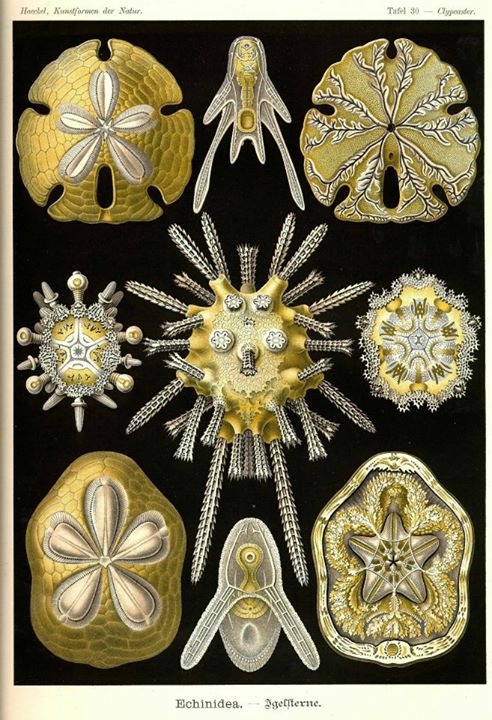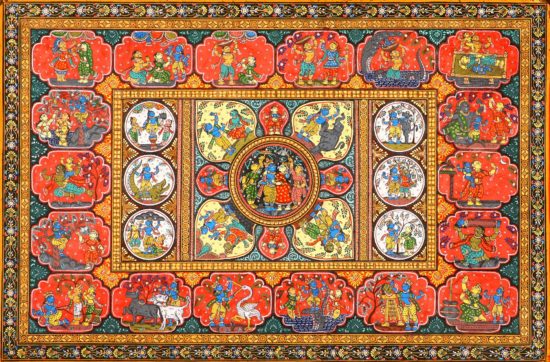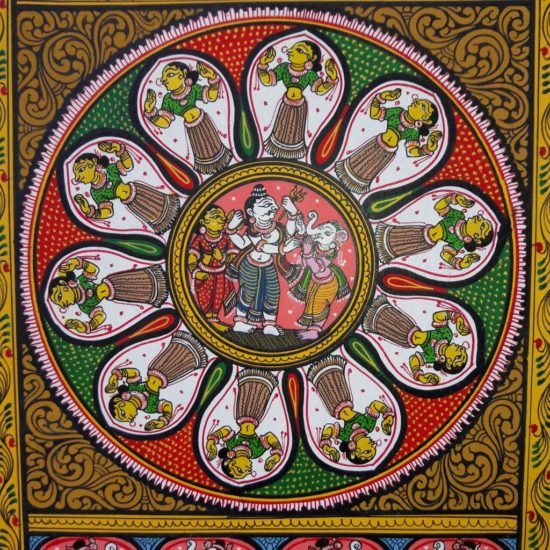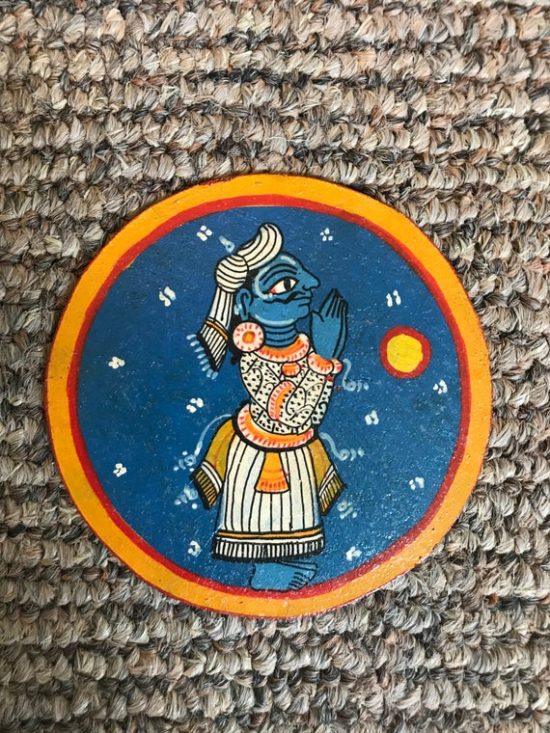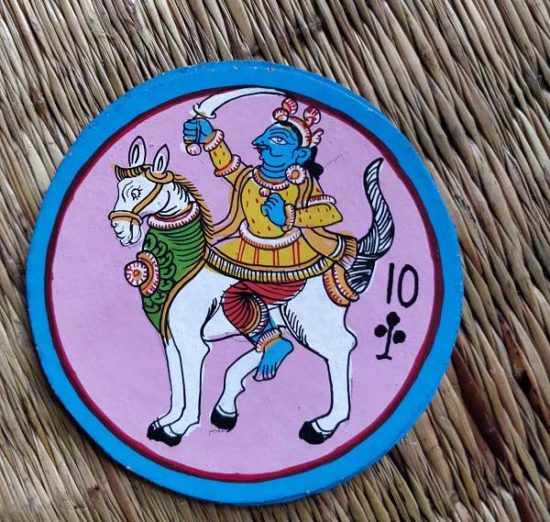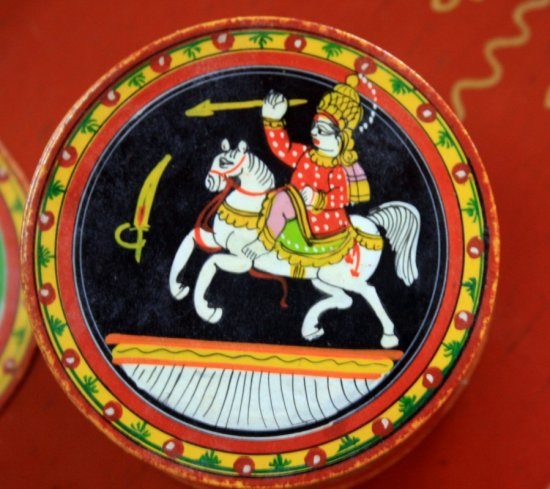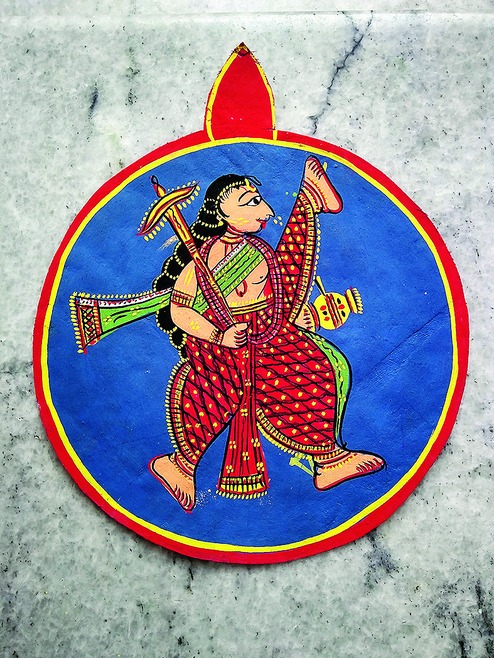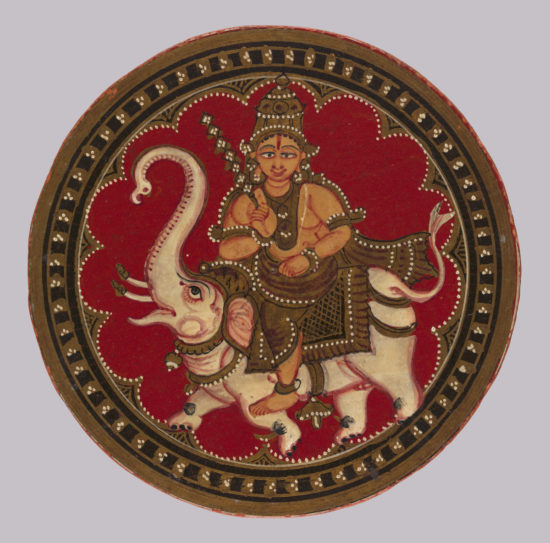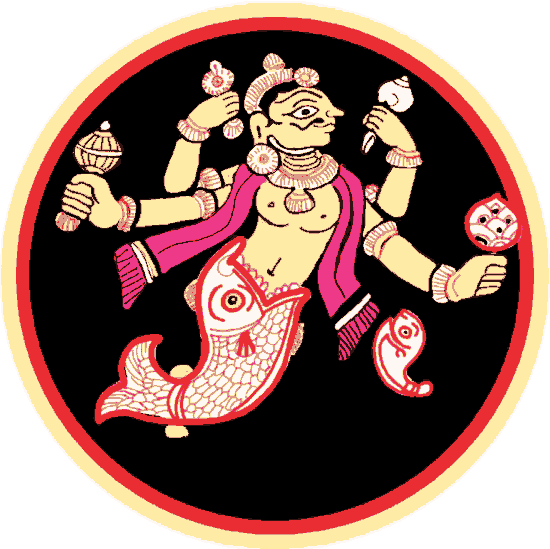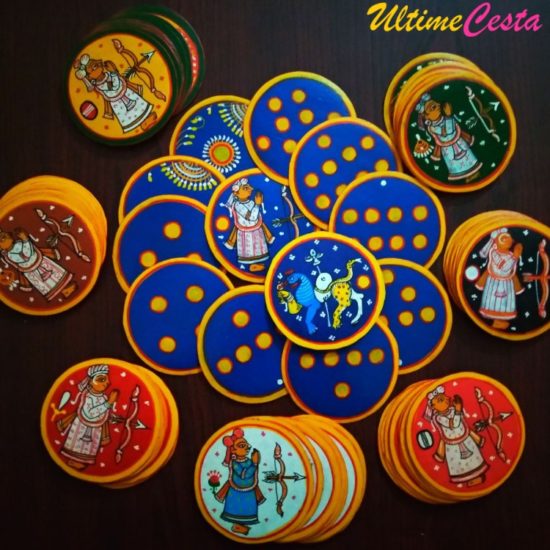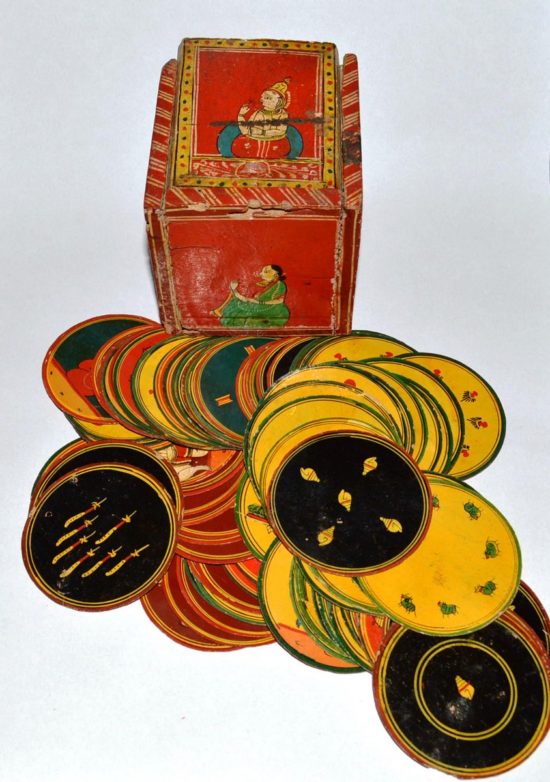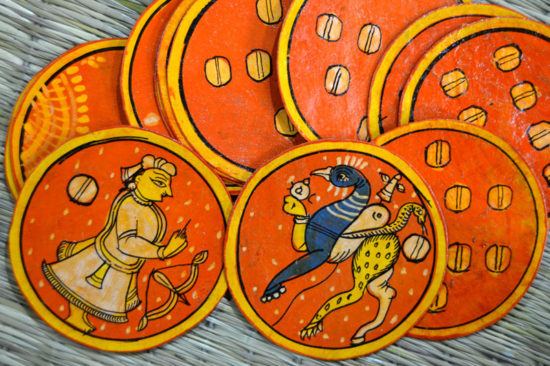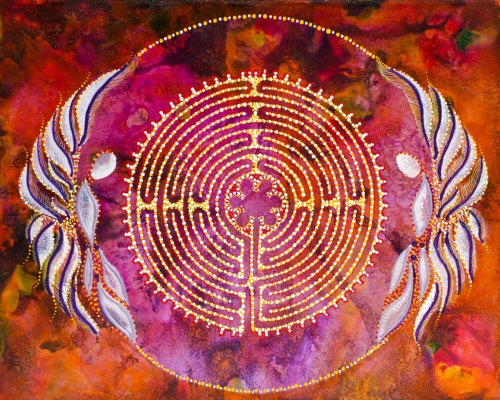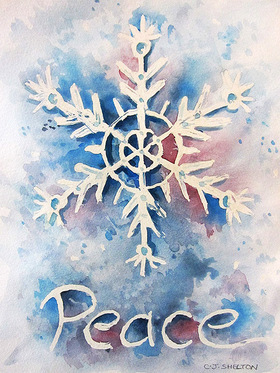shirleytwofeathers
Vintage Science Mandalas
Traditional Orissa Mandala Art
This is a small gallery of mandala art painted in the traditional Orissa style. If you are interested, you can read more about it here: About The Orissa Art Tradition. Enjoy!
Ganjapa Playing Cards Gallery
I love these wonderfully artful little round playing cards. You can read about them here: About Ganjapa Playing Cards. They are traditionally painted in the Orissa Art Tradition which, if you are interested, you can find out more about here: About The Orissa Art Tradition.
In the mean time, here is a small gallery of individual cards:
Here are two modern designs:
And, last but not least…
How fun is this?
About The Orissa Art Tradition
Orissa is situated at the eastern coast of India. The state of India has been the home of rich art and culture since time immemorial. Orissa was earlier called Utkal or ‘land of rich art forms’ in deference to its wealth of arts and crafts.
The Patta Chitra, one of the fascinating art form of Orissa has a tradition that goes back centuries. Soaked in puranic culture and classical romances, with vibrant colors, superb craftmanship, simplicity in design the patta chitra is a distinct form of art and has captured the imagination of artists and art lovers alike. The term patta chitra has its origin from the Sanskrit. Patta means vastra or cloth and chitra means paintings. So patta chitra means paintings on cloth.
The use of cloth for painting has been in vogue in India for a very long time. So also was the case with Orissa. It is said that thin cloth paintings were sent to China from Orissa during the rule of Bhaumakars and the craftmanship was highly appreciated.
The patta painting has its root in religion. It is evolved, nourished and flourished under the cult of Lord Jagannath. Therefore the Patta paintings of Orissa is considered to be as old as the construction of the temple of Lord Jagannath at Puri. i.e. 12th Century A.D.
The subject matter of Patta paintings is traditionally limited to Hindu religious themes. However, as time passed, the subject matter as become widely varied. In addition to the stories from Ramayan, Mahabharat and Vesas of Jagannath, new themes on the life and philosophy of Lord Buddha, pictures on Jainism, Jesus Christ and important historical events are also depicted in patta paintings.
In recent years some artists are putting modern concepts/themes to it. Some PACADian animators are doing animation with pattachitra style. With the advancement of time, a lot of changes have been noticed in the preparation, color, theme, approach to the subject and in, the market-ability of patta paintings.
The Traditional Method Of Painting
The preparation of pattas on canvas in its traditional way for painting is very interesting. It is ingenuously prepared. A large piece of cloth is washed neatly and spread out over the surface of a cot or on the varandah floor. The tamarind seed is powdered and some water is put on it to prepare a special gum. This gum is applied over this piece of cloth. Before this gum dries up, another piece of the cloth of same size is placed on it and a fresh coating of gum is pasted on it.
Then the patta is allowed to dry in the sun. After it is dried, a chalk like paste of soft white stone powder and tamarind seed gum is mixed in an ideal proportion and applied on both sides. After both sides dry completely, the cloth is cut into required sizes.
After cutting to sizes, the next work is to polish it to make them smooth and suitable for painting. The polishing is first made with a rough stone and then it is polished with a pebble whose surface is smooth. The polishing require long hours of work. The work of preparation of the pati for painting is traditionally done only by the woman folk of the chitrakar families.
Then over the polished cloth, which looks off white in color, the chitrakar start painting on it. The colors used are bright and primarily white, red, yellow, blue, green and black. Red is used predominantly for the back ground.
The colors are prepared out of the natural ingredients.
- White is prepared from powder of conch-shell
- Yellow from Haritala, a kind of stone
- Red from geru (Dheu)
- Hingula black from burning lamp and coconut shell
- Green from leaves
The artists follow a sequential procedure for preparation of the paintings. Single tone colors are used. First the border and the sketch is drawn on the patis either in pencil or in a light color. The artists put correct lines to make the figure more prominent. The lines are broad and steady, then the color is applied.
The visual appeal of a patta painting is in its color combination.The human figures are generally presented frontally but the face, leg are shown side-wise but the elongated eyes are drawn from the front side. Sharp nose and round chins are prominently depicted. The typical hair style, clothing, ornamentation, beards and mustaches are used for different persons, so that there will not been any confusion to recognize which figure is a king, minister sage, royal priest, common man, the God, the Goddesses and the like.
A decorative border is drawn on all sides to give it a frame like look. In this style of painting overlapping is avoided as far as possible. Also, the sense of far and near is neglected. The typical face style makes this type of painting different from other schools of art. The paintings are conspicuous for their elegance charm and aesthetic appeal. Central focus of the painting is the expression of the figures and the emotion they portray, the strong color only reinforce them.
Traditionally, three types of brushes were used. They are broad, medium and fine. These are prepared out of the hairs of the buffalo, calf and the mouse respectively. The Pattachitra style has been elaborated and applications are made on other items besides the Patis. Paintings are made on wooden and bamboo boxes, masks, and pots. Ganjapa, playing cards are also painted in this style. Palm leaf is also used as a base for patta paintings.
The Patta chitra artists are known as chitrakaaras. This family occupation is a tradition is inherited by the artists and passed along through the generations.
This unique form of art must be protected and nourished for generations to come.
Source: Wet Canvas
About Ganjapa Playing Cards
In the 16th Century in Orissa, circular cards with exquisite paintings on them – an art called Ganjapa were very popular among the people of Ganjam; they were used to play ordinary card games. Ganjapa, also called “Ganjapa” is derived from a Persian word “Gajife.“ The earliest mention of Ganjapa is in 1527 A.D. in the memoirs of Emperor Babur.
The cards are arranged in sets in packs of different numbers such as 46, 96, 120, 144 and so on. Each pack has sets of 12 cards, with each set being a different color.
Based on the number of colors in a set, the packs are called atharangi (eight colors), dasarangi (10 colors), bararangi (12 colors), chaudarangi (14 colors) and sholarangi (16 colors). A maximum of 24 colors are used. Of these, the atharangi is the most common.
The themes used vary from common decorations to figurative representations of the Ramayana, the 10 incarnations of Vishnu, and gods and goddesses of Hindu mythology. They vary from region to region and are in Odissi style.
There are eight suits in a pack of cards, each one recognizable by a distinct background color. Each suit has 10 numbered cards and a king and vizier. The king is the highest in value with the vizier coming next, followed by the series in descending order. The king is distinguished as either sitting, or with legs folded at the knees, while the vizier is depicted standing.
Sometimes, the king is on a chariot and the minister mounted on a horse. In some other sets, the king is recognized by his two heads, while the minister is shown with one head. Somewhere on the card is another head of an animal. Eka, Douka, Teeka, Chouka, Pancha, Chhaka or Atha are the numbers of the cards. The horse, rat, Ganesha, Kartika, lotus or fish are the figures generally used.
Exotic Ganjapa cards were popular while luxury cards engraved on plates of wood were exclusive.
Making a Ganjapa card is an art that resembles pata chitra. A piece of cloth is dipped several times in a glue made of tamarind seeds and then dried to make it crisp. Circles are cut out of the cloth with a hollow iron cylinder. Two such circles of cloth, or a circle each of cloth and paper are pasted together. Finally a paste of chalk powder is applied. After this has dried, paints made from lac dye are used to make a base for painting. Cards are hand-printed.
The cards are mainly done by the women folk of artisan families. They prepare the cloth sheets, tamarind glue and traditional color and lacquer paste at home. Male artists traditionally paint figures on the cards.
Colors are used to distinguish the figures. For instance, in the Dasavatara series, blue is used to depict Vishnu avatara (the incarnation of Vishnu). Green personifies Rama, with red as a background color. In Matsya avatara, white is used for the figure (fish) with black as a background color. Kuchha avatara is shown in green, with background yellow as a contrast color.
Source: Ria/Ce
Labyrinth Art
This Is Interesting
How To Draw A Labyrinth
Labyrinthos has a nice little tutorial on how to draw labyrinths. They also have great tips and tricks for creating a large one out doors.
Here, we have two nice little gifs that show a really simple way to draw a labyrinth. As you can see, they are the same, the only difference being the starting point.
I know this is cyberspace, but I beg you to draw some labyrinths with paper and pencil (you remember those crude stick-like writing implements?). The construction of a labyrinth is a lesson in sacred geometry. If you do it just with your brain and not with your hand, you won’t really gnow what it is all about.
Please draw this labyrinth at least ten times! Look for the feeling you get when you draw a labyrinth and that point when you don’t have to think about it any more, and your hand gnows what to do ‘by itself’. Gnowing is consciously using both your analytical/left-brain and your intuitive/right-brain assets equally.
Another Visiting Labyrinth
Labyrinths are not difficult to create, here is a nice one from Knowth.com
Garden Labyrinth with standing stone, the larger stones in the ground (at the front in the photograph) mark the setting sun at the winter solstice, equinox and summer solstice. Three stones on the east of the labyrinth (at the back in the photograph) mark the rising sun at the winter solstice, equinox and summer solstice.
When the Garden Labyrinth was first constructed, the paving bricks were placed on the grass, maintenance was time consuming, so the paving bricks were sunk to be flush with the ground.
The design is a classical 7 circuit labyrinth. The centre was changed so that there are no straight lines, like the entrance stone at Newgrange.
This is how it looks in winter.
Even the cat likes to walk the labyrinth!
On Walking A Labyrinth
There are two basic principles:
- On the labyrinth, everything is metaphor.
- There is no right or wrong way to walk the labyrinth.
Walking the labyrinth is quite personal. There are many different reactions to a labyrinth walk—joy, contemplation, revelation, sadness, elation, etc. Be unselfconscious and give yourself permission to let your reaction be expressed as it chooses—crying, laughing, dancing, singing. There should be absolutely no judgement or embarrassment associated with a labyrinth experience. Don’t be surprised by your reaction. Remember, there is no right or wrong way to walk the labyrinth. Trust Spirit.
With the labyrinth, everything is metaphor—sound, waiting, thoughts, smells, body feelings, witnessing others, etc. Let the experience be what it will be.
The labyrinth is a two-way path. The walk is interactive. Do what feel natural. Follow your own pace. If you lose your way, that’s OK. Think of it as metaphor. It is OK to pass and to be passed. You may want to stop, especially at the switch-back turns. When on the labyrinth, it is important to be considerate. In the center you may want to visit each of the pedals, you may sit or lie down, and can stay for as long as you wish. There is no right or wrong way to walk the labyrinth.
A labyrinth walk is often considered a three fold path. Walking the labyrinth is a time of release, quieting, emptying, shedding (Purgation). Standing in the center is a time of awakening, receiving, opening (Illumination). And the journey out is a time of return, integrating, strengthening (Union). It is the metaphoric path home. Again, on the labyrinth everything is metaphor.
Take your shoes off unless you need them for support or medical reasons. You may want to approach the labyrinth with a centering thought or a question. You can ring a bell, wave a scarf, listen to music, or do what ever during your walk. It is common to make a ritual bow before beginning. When finished, it is again common to acknowledge the labyrinth.
Processing your experience is mostly personal. Keeping silence for a time is one way to do this. Be with your experience, your feelings (especially how you feel in your body), and your thoughts. It may be hard to express your reaction or experience in words so process things internally and symbolically. If you can, you may want to draw or write in a journal.













